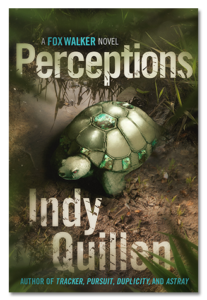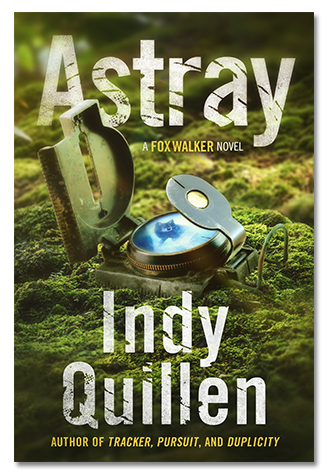Not that long ago, it was common practice for homemakers to spend the bountiful months of harvest preparing for the winter months ahead: curing meats, canning vegetables from the garden, drying herbs, and storing up food for the lean times.
Today we all simply drive down to grocery store or market and purchase what we need – when we need it.
But we shouldn’t be lulled into believing this abundance is permanent. Most stores carry enough food on their shelves for three days. Ask anyone who lives in the snowbelt what happens to the food store shelves when a winter storm warning is issued. The shelves are wiped out within hours.
You’ve heard me say this before and I’ll say it many more times in the future. Food storage is a great place to start when preparing to be more self-reliant during unexpected lean times or to be ready in case of a disaster scenario.
So today I thought I’d talk about 5 foods that last practically forever.
These staples should definitely be a part of your pantry.
Raw Honey
 Raw Honey is totally unheated, unpasteurized and unprocessed honey. It has exceptional nutritional value and contains amylase, an enzyme concentrated in flower pollen, which helps predigest starchy foods like breads. It doesn’t ferment in the stomach and so counteracts acid indigestion.
Raw Honey is totally unheated, unpasteurized and unprocessed honey. It has exceptional nutritional value and contains amylase, an enzyme concentrated in flower pollen, which helps predigest starchy foods like breads. It doesn’t ferment in the stomach and so counteracts acid indigestion.
Supermarket honey has been pasteurized for easier filtering and bottling, and a smoother look for shelf appeal. Just like any other food, pasteurization partially destroys the delicate aromas, yeast and enzymes, which activate vitamins and minerals in the body.
Raw, unfiltered honey is characterized by fine textured crystals and looks cloudy. It has a high antioxidant level and usually granulates after a few months. This does not change the edibility and it can be slightly warmed to restore.
Since there are no strict legal requirements for labeling raw honey, you may find some raw honey which has been slightly warmed (but not pasteurized) just enough to allow the honey to flow for bottling.
Raw, unfiltered honey can be purchased directly from a bee farm, bee keepers or at a farmers’ markets.
Salt
 Salt is powerful flavor enhancer, meat preservative, and helps food keep its texture. The storage life for salt is indefinite as long as it doesn’t become contaminated with dirt, etc. If you don’t have it stored in an airtight container, it may absorb moisture and cake, but it can be dried in the oven and broken up with no harm. We take salt for granted these days, but it is an essential ingredient for food preservation.
Salt is powerful flavor enhancer, meat preservative, and helps food keep its texture. The storage life for salt is indefinite as long as it doesn’t become contaminated with dirt, etc. If you don’t have it stored in an airtight container, it may absorb moisture and cake, but it can be dried in the oven and broken up with no harm. We take salt for granted these days, but it is an essential ingredient for food preservation.
Sea Salt is the ‘real’, unrefined form of traditional table salt. Unlike the unhealthy counterpart, sodium chloride (refined table salt), sea salt still contains all the trace minerals in their natural balance straight from nature, and no additives. In the event of a food crisis, sodium chloride is better than nothing.
Kosher Salt came by its name not because it’s kosher, but because it’s used in “kashering” meat to make it kosher. Why I list it for food storage is that it’s generally a pure salt suitable for canning, pickling and meat curing. Sometimes it’s slightly less expensive than Canning Salt and easier to find. It does have a larger grain than Canning Salt, but it can be rolled to make the grains easier to dissolve.
Cornstarch
 Cornstarch is a food crisis necessity that has a variety of uses. It’s inexpensive and is easily affordable for most people. Since cornstarch is made from corn, and corn is one of the largest crops for GMO products, make sure you purchase organic, GMO free Cornstarch.
Cornstarch is a food crisis necessity that has a variety of uses. It’s inexpensive and is easily affordable for most people. Since cornstarch is made from corn, and corn is one of the largest crops for GMO products, make sure you purchase organic, GMO free Cornstarch.
Of course we know the common uses of helping to thicken gravies, sauces or soups, and to make that omelet fluffy, but it can do so much more.
I never found one store-bought product that soothed diaper rash like cornstarch did for my babies. And cornstarch can help you remove everything from ink stains on clothes, oil stains on leather, to wax stains on wood furniture.
Run out of Baking Powder? You can make your own by mixing cornstarch, baking soda and cream of tartar in a ratio of one part to one part to two parts respectively.
White Rice
 Considered by many to be the ultimate survivalist food to stockpile for a food crisis. It’s versatile, contains a high caloric value and has an almost indefinite shelf life. It’s the main food source of over half the world’s population. Brown rice is a healthier alternative but also has a shorter lifespan as it tends to become rancid, due to the higher oil content.
Considered by many to be the ultimate survivalist food to stockpile for a food crisis. It’s versatile, contains a high caloric value and has an almost indefinite shelf life. It’s the main food source of over half the world’s population. Brown rice is a healthier alternative but also has a shorter lifespan as it tends to become rancid, due to the higher oil content.
Here in the US there are three types of white rice, Long Grain, Medium Grain and Short Grain, as well as lots of styles, such as jasmine, arborio, basmati and others.
Make sure you purchase your rice from a trusted source. Store the rice in a tightly sealed container. Use food-safe oxygen absorbers, available from food supply stores, to help preserve rice quality and protect from insect infestation. Rice stored at a constant 70 degrees with oxygen absorbers will store well for up to 10 years. In cooler storage areas rice can be stored for up to 30 years.
Dried Beans
 Dry beans have the highest protein content of any seed crop and contain all the essential amino acids, except methionine (which can be obtained from corn, rice or meat). They are an excellent source of fiber, starch, minerals and some vitamins.
Dry beans have the highest protein content of any seed crop and contain all the essential amino acids, except methionine (which can be obtained from corn, rice or meat). They are an excellent source of fiber, starch, minerals and some vitamins.
Just like most foods, beans are best stored in the absence of light and oxygen. Packaging recommendations are #10 cans or Mylar-type bags. Oxygen absorbers should be use to remove oxygen form the containers.
Although beans in food grade bags have a shelf life of one year or more, when packaged in #10 cans or Mylar bags, with the oxygen removed, the shelf life increases to 10 or more years.
A B.Y.U study showed that pinto bean samples that had been stored up to 30 years still had a greater than 80% acceptance for emergency food use by a consumer taste panel. The study concluded that pinto beans be considered acceptable for use in long-term storage efforts.
I hope you’ve found this information helpful for stocking up your food pantry and becoming more Self-Reliant.


 Being outside in nature is the most basic part of who I am. Besides gaining knowledge about wildlife, I learn lessons about who I am, and surprise myself about what I am capable of achieving. Nature continually inspires me. It is a part of all my writings, no matter the genre or subject matter.
Being outside in nature is the most basic part of who I am. Besides gaining knowledge about wildlife, I learn lessons about who I am, and surprise myself about what I am capable of achieving. Nature continually inspires me. It is a part of all my writings, no matter the genre or subject matter. 






I have read all of the Walker novels to date and have enjoyed them all. Not only are they entertaining but very informative. It is great to know when I pickup a Walker novel I will feel great having read the story. There is so much going on today it nice to be able to take a break and feel something good. Thank you for making my day a good day. I look forward to more from you in the future.
Thank you, John Bill for your kind words. I’m so thrilled that you have enjoyed the Fox Walker Novels. Knowing someone enjoys my stories is what keeps me inspired to write. Thank you for making MY day!
Thanks Indy, I never considered corn starch. I also agree with Mike on chocolate. At our house it’s considered a food group. Oh, and hurry up with your next book…I am anxiously waiting!
Thanks for stopping by Carl – good to hear from you! Yeah, I have to admit that dark chocolate is a staple in our household as well, especially since we don’t keep any other desserts on hand. Man cannot live by bread alone, eh? As for the next Fox Walker book, it’s getting close! I’ll have it up on Amazon for pre-order in March of this year and it will be released early part of April. I hope you enjoy the second one as well!
Indy: One of my favorite blogs! I have shared this blog with several people and we’ve all just loved it. I went to the farmer’s market yesterday especially to get raw honey. They also sell it at Frazier Farms from local bee keepers in Vista. We love kosher salt here and it’s amazing how many different kinds of salts there are in the cooking world. I love it! I also loved the information about the corn starch and how to make baking powder, which I occasionally run out of. And we’re eating a lot more beans around here. I’ve taught myself how to cook many different kinds. I think they’re a great substitute for meat and so healthy for us. Thanks for this point. I enjoyed it immensely.
Leslie – I’m so happy you enjoyed the blog and thank you so much for sharing it! We like kosher salt as well. And it’s good to know Frazier Farms has local honey – thanks for sharing that information. Growing up we had beans and cornbread once a week to save on the grocery bill. Still one of my favorite meals. Thanks again for your comment!
For a long passage, like crossing the Pacific Ocean, cruisers store up about three months of staples for their supply, just in case. A rule of thumb is to store enough for three meals per day for double the number of days the passage is expected to take. But cruisers tend to store staples much longer. Would the survival foods you list here last long in tropical ocean air?
Hi Lois – that’s a great question. Keeping it in the dark and using oxygen absorbers would be a must. Everything I’ve read points to warmer temps means shorter storage time. But these studies talk about years, not months. So you might be fine. Still I would want to do more research as to how tropical conditions would affect the time frame…
Interesting post. For emergencies it’s gotta be chocolate. It’s a food group, ya know, and who could possibly live without it? 🙂
Ha! Chocolate – of course! How did I miss that one? Seriously though, Mike, I’m going to do some research on dark chocolate and see how long it can be stored and the best way to store it! Thanks! 😀